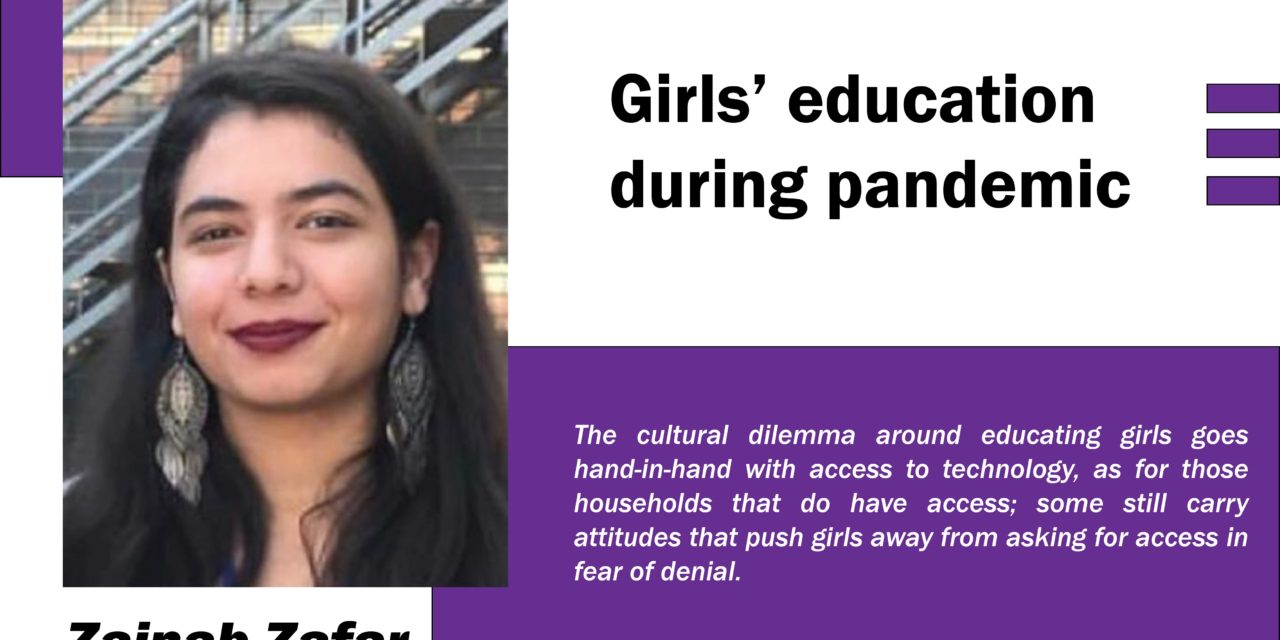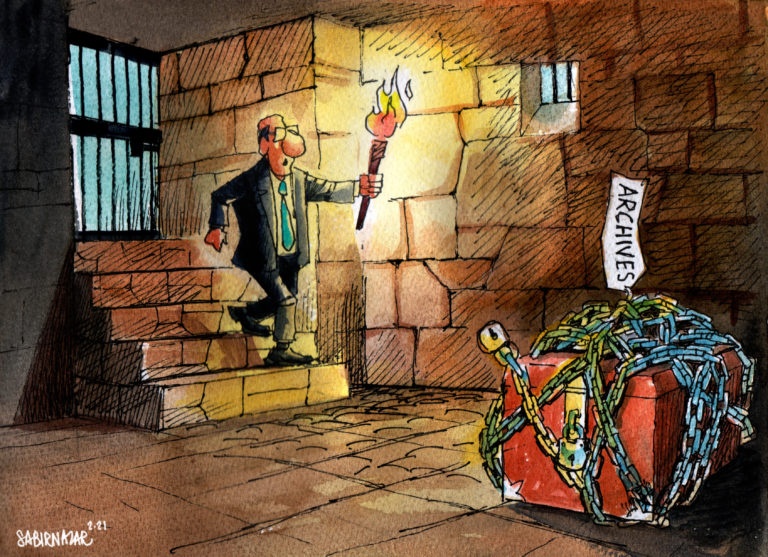Zainab Zafar
Pakistan already sits in a standstill with eradicating its illiteracy rates, with the ongoing pandemic the socioeconomic barriers towards curbing the problem have only widened. Girls in particular were at the short end of the stick. With 22.8 million children out of school and near 53 per cent of them being girls the pandemic has only worsened the situation.
With the initial lockdown and loss of household income, those belonging to lower economic strata are unable to make ends meet let alone afford sending their children to school. Parents who are made to prioritize between sending their daughter or son to school the outcome ends up being the latter. Present sentiments of gender stereotypes and favoring of male education combined with the lack of income has led to a higher dropout rate of female students.
The government has made provisions for E-learning, a seemingly good attempt at curbing the issue at hand by putting into use TV and radio based education. While this may be a reasonable endeavor the accessibility of the technology given Pakistan’s digital divide alongside the lack of electricity and radio transmission makes it hard to be applicable as a solid solution. For e-learning to be an effective mechanism of academia there must be adequate resource allocation.
With the digital divide in mind, higher education being shifted towards remote education has been a hindrance for those girls who were able to extend their studies to such a level. Without proper laptops or data services they are unable to access their required workload or attend online classes. The cultural dilemma around educating girls goes hand-in-hand with access to technology, as for those households that do have access to the proper resources; some still carry attitudes that push girls away from asking for access in fear of denial. The consequences of asking to be educated alone are enough to push a large number of girls out of being educated, to ask for permission for usage of internet services is a whole new challenge.
For many girls educational institutes acted as green spaces. In a male dominated society it was already a task to be able to attend school. But the attraction laid in having a safe environment for learning and socializing as part of education. While boys still feel safety and security stepping out and indulging in activities outside school following the closure in lockdown, girls do not share this privilege. Schools acted as a refuge from the dangerous notions of everyday life in public to girls.
In trying times like the pandemic, it has only shown the importance of technology and resources towards educational attainment. As a nation we are not privy to the benefits of remote learning rather we let ignorance take the lead. Prior to the pandemic, during it and even after it, e-learning can be an effective tool of eradicating illiteracy and allowing more girls to be educated. Given that a majority or girls are ostracized from educational opportunities due to security concerns of physically sending a child to school. TV and radio-induced learning can be used to counter this belief and allow girls to be educated at home. For that not only is there need for an increase in funding for developing logistics to allow for access to technology and internet or radio transmission lines but also for investing into innovative learning. The curriculum of e-learning is as integral to be engaging as is equally important to allocate resources. Without engaging the children in academics there is no point to online education. Creative curriculum development stands as a test alone.
For many the pandemic is still a myth and due to this notion not only have these individuals become a part of the high transmission rates of the virus but have also led to many smaller educational institutes to not close. Many disregard the severity of the effects of the pandemic and others simply cannot afford closure nor can afford going online. While it is important for a higher budget allocation towards not only developing better mechanisms for learning resources, investment into teacher training, managing and monitoring teacher and pupil attendance and curriculum expansion is simultaneously as vital.
In India’s rural areas, teachers have taken up innovative routes of teaching their students by loudspeaker and maintained social distance or by carrying around speakerphones on a motorbike so students can partake in distance learning.
Pakistan must reimagine its routes for education; we must alter our traditional ways of schooling to go in line with creating solutions that are effective mid pandemic as well as after.
[Zainab Zafar is Islamabad based student]


